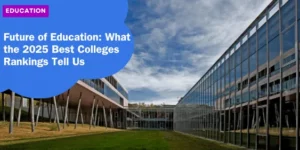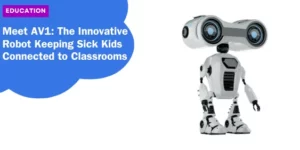Houston Expert Advocates for Business Strategies to Enhance Education Outcomes

It is no secret that K-12 public schools across the United States face major challenges.
Resources are shrinking. Costs are climbing. Teachers are battling burnout.
Student outcomes are declining.
Numerous areas of concern contribute to these issues, some of which are intangible and inescapable, exacerbated by crises like the COVID-19 pandemic.
However, certain challenges can be fixed or alleviated by wisely allocating resources.
Issues like a lack of strategic focus can be entirely avoided.
This final area, strategic focus, is the primary concern addressed by researchers Vikas Mittal of Rice Business and Jihye Jung of UT-San Antonio in their groundbreaking study.
The Call for a Strategic Focus
Mittal and Jung argue that superintendents and principals often misallocate vast amounts of time and resources in their efforts to appease a multitude of stakeholders — including students, parents, teachers, board trustees, community leaders, state evaluators, college recruiters, and potential employers.
Instead, Mittal and Jung suggest that administrators need to streamline their focus onto one key stakeholder: the “customer,” meaning students and their families.
It may seem unusual to refer to students and families as “customers” within the context of public education.
Unlike a straightforward transaction, such as purchasing an iPhone or fast food, the classroom involves a relational dynamic in which students and caregivers interact directly with teachers and peers.
Yet, given that K-12 public funding is tied to enrollment and attendance figures, the success or failure of a school or district ultimately hinges on “customer” satisfaction.
The Stakeholder Appeasement Trap
When students and families become dissatisfied with their schools, a detrimental cycle often ensues.
Dissatisfied families with the means may choose to homeschool or move their children to private or better-performing public schools.
This exodus leads to a decrease in enrollment revenue, which then forces administrators to cut costs.
These cutbacks generally result in worsened school performance and lower satisfaction among the remaining students and families.
This further dissatisfaction leads to more families leaving, perpetuating a vicious downward spiral.
Schools typically need around 500-600 students to break even.
To combat this decline, administrators might adopt a “spray and pray” or “adopt and hope” approach, pursuing various tactics to satisfy multiple stakeholder agendas.
One group may demand stronger security measures, while another seeks improved internet access.
Others may advocate for better facilities or expanded athletics programs.
While the impulse to appease all stakeholders is understandable, Mittal and Jung find that such efforts dilute strategic focus, waste resources, and create a bloated array of ineffective initiatives.
The Consequences of Initiative Bloat
The burden of implementing numerous initiatives typically falls on teachers and frontline staff, leading to mediocre performance and burnout.
As more initiatives are adopted over time, lines of communication become strained.
Distracted by efforts to please everyone, teachers and staff may fail to adequately meet the needs of their primary “customers” — the students and their families.
Mittal and Jung’s research, based on data from administrator interviews and over 10,000 parent surveys, reveals that students and families truly value only a few strategic areas.
The most important are family and community engagement, followed by academics and the quality of teachers.
Contrary to common assumptions, extracurricular activities like athletics are among the least important factors.
Prioritizing Lift Potential
Administrators might wrongly assume that areas frequently mentioned by parents and students are the ones they value most.
However, Mittal and Jung warn against conflating salience (how often an issue is mentioned) with lift potential (how much an issue can improve customer satisfaction).
Instead, a customer-focused strategy should prioritize areas with the highest lift potential — those that significantly enhance student and family satisfaction.
If family and community engagement prove most important, administrators should invest resources in the key factors that improve this engagement.
For example, allowing families input on school policies is highly effective in demonstrating community engagement.
Similarly, improving the academic qualifications of teachers can substantially elevate the perceived quality of education.
De-emphasizing Ineffective Initiatives
Equally important is the need to de-emphasize initiatives that do not add significant value.
While it can be challenging to discontinue established programs, ultimately, this allows teachers and frontline staff to concentrate on more impactful execution levers.
Mittal and Jung estimate that it would take about 18 to 24 months for a school district to develop a customer-focused strategic framework, with an additional 12 to 18 months to embed this approach into practice.
Long-term Structural Changes
Embedding a customer-focused strategy involves changing how senior administrators, school principals, and teachers are held accountable.
Instead of emphasizing standardized test scores, which do not necessarily add to customer satisfaction, it’s more effective to focus on input factors that directly impact the quality of academics and student learning.
Future Research Directions
To aid schools in developing and implementing a customer-focused strategy, Mittal and Jung suggest that future research should delve deeper into frameworks for guiding schools in maximizing value for students and families.
Such research could provide actionable insights for administrators aiming to enhance educational outcomes through strategic resource allocation.
The Path Forward: Strategic Customer Focus
Public education in the U.S. faces formidable challenges, but strategic focus can turn the tide.
By concentrating on the areas with the highest lift potential — family and community engagement, quality academics, and improved teacher qualifications — schools can enhance satisfaction among their primary “customers.”
Administrators should eschew the stakeholder appeasement trap and concentrate resource allocation strategically.
Conclusion: Implementing Business Strategies to Elevate Education
The findings of Mittal and Jung’s study offer a crucial lesson for K-12 education: adopting a customer-focused strategy can significantly improve educational outcomes.
By understanding that students and families play the role of customers, administrators can reallocate funds, time, and human resources to the areas that matter most to these key stakeholders.
This approach will help avoid the pitfalls of initiative bloat, mitigate teacher burnout, and ultimately create a learning environment where students can thrive.
Shifting focus toward a strategic, customer-centered model requires time and coordinated effort.
However, the benefits are profound, promising a more effective, satisfied, and robust educational system that better meets the needs of students and families.
In this way, schools can successfully navigate their many challenges, turning strategic focus into tangible educational opportunities and improved outcomes.






